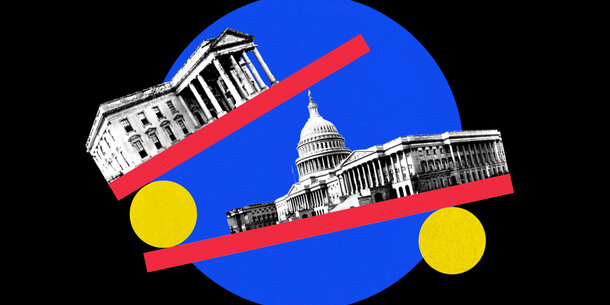For Immediate Release
August 10, 2023
Contact:
Katrin Haldeman, Disability Rights New York: katrin.haldeman@drny.org, 518–275–1720
Julian Brookes, Brennan Center for Justice: brookesj@brennan.law.nyu.edu, 6646–673–6224
Today the Brennan Center for Justice NYU Law and Disability Rights New York published How to Improve Early Voting Accessibility in New York State. The joint report examines early voting polling places’ accommodations for voters with disabilities in New York State. Researchers assessed 179 of the 402 early voting polling places in New York State used in the 2022 election cycle. They found rampant violations of state and federal standards designed to ensure that voters with disabilities have equal access to the ballot.
According to the Centers for Disease Control, approximately 25% of New York State’s adult population has a disability that affects their mobility, cognition, vision, hearing, or ability to live independently or take care of themselves.
“This report has highlighted many issues that continue to create barriers to voting. When 94% of polling sites that we surveyed are not fully accessible, it is more than clear that all voters cannot exercise their right to vote,” said Timothy A. Clune, executive director of Disability Rights New York. “If someone can’t access their polling location, their ballot, or the machines needed — they can’t vote. Period. The Americans with Disabilities Act was passed 33 years ago. There is no reason that these barriers continue to exist. New York State must do better.”
Among the findings in How to Improve Early Voting Accessibility in New York State:
- 169 (94%) of the 179 early voting polling places surveyed in New York State weren’t fully accessible to voters with disabilities.
- In 42% of the early voting polling places surveyed in New York State, ballot marking devices — voting machines that allow individuals with low vision, limited dexterity, physical impairments, or other disabilities to mark their ballots privately and independently — weren’t set up to ensure privacy.
- 58% of the early voting polling places surveyed didn’t have adequate signage prohibiting parking in “access aisles” that provide room for wheelchair users to get in and out of vehicles in parking spots.
Other common violations included doors without levers and handles to help people with disabilities enter and exit polling places or without sufficient clearance for voters using mobility devices. Poll workers at many of the polling places lacked adequate knowledge and training to assist voters with disabilities. The authors note that many of the problems could have been — and still can be — addressed with simple, low-cost solutions.
New York State’s early voting law, enacted in 2019, gives voters a nine-day window before Election Day to cast their ballots. The polling places that the researchers assessed were in 57 of the state’s 62 counties — every county in the state except the five that make up New York City. Although this report focuses on early voting accessibility, the authors emphasize that its findings and recommendations apply to Election Day voting as well, where voters with disabilities face the same challenges in casting their ballot.
“Three years after New York adopted early voting, voters with disabilities continue to struggle to cast a ballot conveniently, privately, and independently. That needs to change,” said Derek Tisler, counsel in the Democracy Program at the Brennan Center and a co-author of the report. “State lawmakers and the state and local boards of elections must work to ensure that all New Yorkers have full and equal opportunities to vote.”
How to Improve Early Voting Accessibility in New York State recommends steps that the New York State legislature, the New York State Board of Elections, and local boards of elections can take to improve early voting polling place accessibility for 2024, including but not limited to:
- Local boards of elections should better prepare poll workers to operate ballot marking devices and recruit a more diverse group of poll workers that includes people with disabilities.
- The New York State Board of Elections should improve guidance and support for local boards of elections on how to implement accessibility standards. It should take a more active role in enforcing those standards and conduct ongoing oversight of counties that violate accessible voting laws.
- The New York State Legislature should add to the options for voters with disabilities to cast ballots before Election Day, such as requiring polling places to offer curbside voting and authorizing and funding mobile voting units. The legislature should also increase funding for election administration and early voting.
How to Improve Early Voting Accessibility in New York State is available here.

